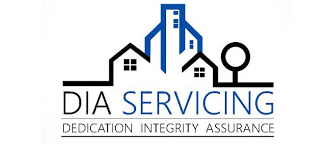The Complete Checklist for E-Filing 1098 and 1099-INT Forms
As we progress towards the 2024 tax season, the Internal Revenue Service (IRS) is firmly establishing its digital-first strategy in tax administration. This pivotal shift underscores the increasing importance of electronic filing (e-filing) of various tax forms, with special emphasis on the 1098 and 1099-INT forms.
These documents, crucial in reporting mortgage interests and investment incomes, play a significant role in the financial reporting of many taxpayers, particularly those involved in private lending and investment sectors.
As the e-filing deadline of March 31, rapidly approaches, the need to understand and proficiently navigate this digital process has become more critical than ever.
This article aims to demystify the e-filing landscape, providing readers with a clear understanding of the intricacies involved in submitting the 1098 and 1099-INT forms electronically.critical aspect of e-filing, ensuring that you meet all necessary requirements and deadlines with confidence.
Furthermore, to facilitate this transition, we present a detailed checklist that walks you through the entire e-filing process. From preparing your documents to understanding the specific details required for each form, this checklist aims to equip you with all the tools needed for a successful and compliant e-filing experience.
So, let's embark on this informative journey together, unraveling the complexities of e-filing and ensuring that you’re well-prepared to meet the IRS's March 31, 2024 deadline with assurance and precision.
The Shift to Digital: Understanding the Context
The move towards e-filing is part of a broader IRS initiative to streamline tax administration and enhance accuracy in reporting. This shift doesn't just represent a change in how forms are submitted; it signifies a significant transformation in the IRS's approach to data management and taxpayer interaction. By embracing digital solutions, the IRS aims to make the filing process more manageable and more secure for taxpayers while ensuring faster processing and better compliance.
Why E-Filing Matters
For those dealing with forms 1098 and 1099-INT, e-filing comes with multiple benefits. It reduces the likelihood of errors commonly seen in manual processing, offers quicker confirmation of submissions, and enhances the security of sensitive financial information. Moreover, e-filing is environmentally friendly, cutting down on paper usage significantly.
E-Filing 1098 and 1099-INT: What You Need to Know
The 1098 form, known as the Mortgage Interest Statement, is crucial for homeowners and real estate investors. It details the amount of mortgage interest paid throughout the year and is essential for tax deductions. The 1099-INT form, on the other hand, reports interest income, such as that earned from savings accounts, bonds, and other investments. Accurate reporting of these forms is vital for tax compliance and financial clarity.
The Ultimate E-Filing Checklist for 1098 and 1099-INT Forms
Embarking on the e-filing journey requires a structured approach to ensure all regulatory requirements are met efficiently. This checklist is designed to guide you step-by-step through the process, helping you navigate the complexities of e-filing with ease. Here's a comprehensive checklist to help you ensure a smooth e-filing process:
Gather Necessary Information
-
Payer's name, address, and Taxpayer Identification Number (TIN).
-
Recipient's name, address, and TIN (Social Security Number, Employer Identification Number, or Individual Taxpayer Identification Number).
Understand 1098 Form Specifics
-
Mortgage interest received from payers/borrowers.
-
If applicable, the amount of points paid directly to the lender.
-
Property address (for the mortgage).
-
Outstanding mortgage principal as of the beginning of the year.
-
Mortgage origination date.
Understand 1099-INT Form Specifics
-
Total amount of interest paid or credited to the account during the year.
-
Any foreign tax paid and the country to which it was paid.
-
Interest on U.S. Savings Bonds and Treasury Obligations (if applicable).
-
Investment expenses.
Verify Accuracy of Information
-
Double-check all TINs and personal information for accuracy.
-
Ensure the financial amounts are correctly reported.
Choose an IRS-Approved E-filing Service
-
Select a reliable and IRS-approved e-filing service provider.
-
Ensure the service meets your filing needs (bulk filing, corrections, state filing, etc.).
Familiarize Yourself with E-filing Software
-
Understand how to input data into the e-filing system.
-
Know how to upload bulk data if necessary.
Submit Forms Before Deadline
-
For the 2024 tax year, ensure submission before March 31, 2024.
-
Consider time zone differences if applicable.
Keep Records
-
Store a copy of filed forms for at least three years.
-
Keep proof of e-filing (confirmation number, email confirmations).
Be Aware of State Filing Requirements
-
Some states require separate filing or additional forms.
-
Check state-specific filing requirements and deadlines.
Plan for Corrections
-
Understand the process for submitting corrections if errors are discovered after filing.
Stay Informed about Changes
-
Regularly check for any updates or changes in filing requirements from the IRS.
Consult with a Tax Professional
-
If uncertain, consult with a tax professional or accountant for guidance.
E-File with Confidence: Finalizing Your 1098 and 1099-INT Journey
As we approach the e-filing deadline of March 31, it's clear that the move towards digital tax filing is not just a temporary change, but a significant step towards a more efficient, secure, and environmentally friendly future in tax administration. For those managing 10 or more 1098 and/or 1099-INT forms, the mandate to e-file is a critical compliance requirement.
Please remember that paper forms still need to be mailed to borrowers and investors by January 31st.
Understanding the nuances of e-filing can seem daunting, but it doesn't have to be a solo journey. For private lenders and investors, particularly those who are part of the LOAN SERVICING SOFT network, there are tailored solutions designed to make this process as smooth and hassle-free as possible.
With options like unlimited e-filing for $499 and the expertise of seasoned professionals who have been in the field for over 40 years, you can ensure that your tax filing is not only compliant but also done with precision and care. This one-stop solution offers peace of mind, knowing that your forms will be filed accurately and securely, saving you time and reducing the potential for errors.
For those not currently using LOAN SERVICING SOFT, the process remains straightforward. By filling out a simple agreement and uploading your data through a secure link, you can easily step into the world of e-filing. This system is not only about meeting regulatory requirements; it's about embracing a more sustainable way of handling tax documents, significantly reducing paper use and contributing to your business's green initiatives.
Remember, e-filing is more than just a mandatory task; it's a step towards a more streamlined, secure, and responsible way of managing financial obligations. As the deadline approaches, consider leveraging the expertise and convenience offered by professional e-filing services to ensure that your experience is as efficient and error-free as possible.





























